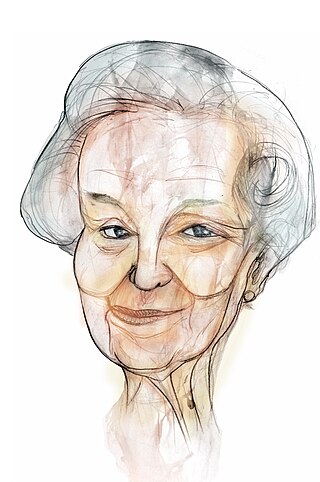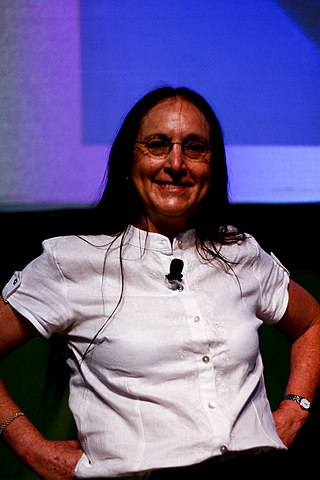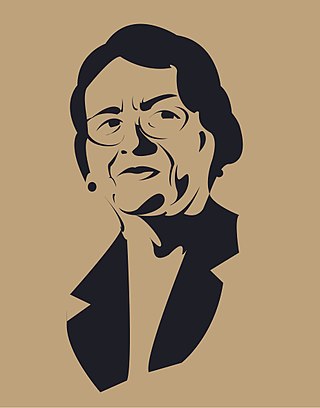
Sandra Moore Faber is an American astrophysicist known for her research on the evolution of galaxies. She is the University Professor of Astronomy and Astrophysics at the University of California, Santa Cruz, and works at the Lick Observatory. She has made discoveries linking the brightness of galaxies to the speed of stars within them and was the co-discoverer of the Faber–Jackson relation. Faber was also instrumental in designing the Keck telescopes in Hawaii.

Pere Casaldàliga i Pla, known in Portuguese as Pedro Casaldáliga, was a Spanish-born Brazilian prelate of the Catholic Church who led the Territorial Prelature of São Félix, Brazil, from 1970 to 2005. A bishop since 1971, Casaldàliga was one of the best-known exponents of liberation theology. He received numerous awards, including the Catalonia International Prize in 2006. He was a forceful advocate in support of indigenous peoples and published several volumes of poetry.

Ricardo Luis Lorenzetti is an Argentine judge graduated from the National University of the Littoral, Argentina, with a long national and international career. He used to be Chief Justice of the Supreme Court of Argentina (2007-2018), proposed by President Néstor Kirchner and approved by the Senate, assuming his position on December 12, 2004, covering the vacancy caused by the resignation of Justice Adolfo Vázquez. On November 7, 2006, he was appointed Chief Justice, officiated as of January 1, 2007. Currently, he is one of the five Justices of the Supreme Court. He was President of the Commission for the preparation of the Parliamentary Act to reform, update and unify the Civil and Commercial Codes of the Argentine Nation, Presidential Decree 191/2011.

Catherine Jeanne Cesarsky is an Argentine and French astronomer, known for her successful research activities in several central areas of modern astrophysics. She was formerly president of the International Astronomical Union (2006-2009) and the director general of the European Southern Observatory (1999–2007). In 2017 she became Chairman of the Board of the Square Kilometre Array radio telescope project.

Karen Marón is an Argentine journalist, war correspondent, producer, international analyst and writer, renowned as one of the top 100 most influential war correspondents in the world in covering armed conflicts, with coverage in more than 30 countries since 2000. As international correspondent specialized in armed conflicts and international politics she has covered conflicts in the Middle East, Latin America, Persian Gulf including the most dangerous places of the world as Iraq, Syria, Lebanon, Colombia, Libya and the Israeli–Palestinian conflict from the Second Intifada up to Israel's military offensive on Gaza Strip.

The Argentine National Observatory, today the Astronomical Observatory of Córdoba, was founded on 24 October 1871, by Argentine president Domingo F. Sarmiento and the North American astronomer Benjamin Apthorp Gould.

Duília de Mello is a Brazilian-born American astronomer. She is currently full professor in Physics at the Catholic University of America and collaborates with NASA Goddard Space Flight Center.
The Instituto de Astronomía Teórica y Experimental (IATE) is a scientific institute funded by the Consejo Nacional de Investigaciones en Científicas y Técnicas (CONICET) and the Universidad Nacional de Córdoba (UNC), located in the city of Córdoba, Argentina, and dedicated to the study of different topics in astronomy. The headquarters of the institute are located at the Observatorio Astronómico de Córdoba.

The Large Latin American Millimeter Array (LLAMA) is a single-dish 12 m Nasmyth optics antenna which is under construction in the Puna de Atacama desert in the Province of Salta, Argentina, next to the Qubic experiment. The primary mirror accuracy will allow observation from 40 GHz up to 900 GHz. After installation it will be able to join other similar instruments to perform Very Large Base Line Interferometry or to work in standalone mode. Financial support is provided by the Argentinian and Brazilian governments. The total cost of construction, around US$20 million, and operation as well as the telescope time use will be shared equally by the two countries. Construction planning started in July 2014 after the formal signature of an agreement between the main institutions involved.

María Assumpció Català i Poch was a Spanish professor, mathematician, and astronomer. She taught from 1952 to 1991. She started as an assistant in the Astronomy Section of the Seminar on Mathematics in Barcelona, related to the Spanish National Research Council. Later, she worked in the Henri Poincaré Institute and she also cooperated in some projects with the special chair of Technology in the Polytechnic University of Catalonia.
Antonia Ferrín Moreiras was a mathematician, professor and the first female Galician astronomer. Her main contributions to astronomy were works on stellar occultations by the moon, measures of double stars and astrometric measurements, as well as the determination of the passage of stars through two verticals. She accomplished all of this while she was working at the Observatory of the University of Santiago de Compostela (USC).

Gladys Elena Vergara Gavagnin was a Uruguayan astronomer and professor, known for her calculations on eclipses, made during a time when computers were not capable of them. The asteroid 5659 Vergara is named in her honor.

Rita Laura Segato is an Argentine-Brazilian academic, who has been called "one of Latin America's most celebrated feminist anthropologists" and "one of the most lucid feminist thinkers of this era". She is specially known for her research oriented towards gender in indigenous villages and Latin American communities, violence against women and the relationships between gender, racism and colonialism. One of her specialist areas is the study of gender violence.

Julieta Norma Fierro Gossman, better known as Julieta Fierro, is a Mexican astrophysicist and science communicator. She is a full researcher at the Institute of Astronomy and professor of the Sciences Faculty at the National Autonomous University of Mexico (UNAM). She is part of the Researchers National System in Mexico, holding a level III position. Since 2004 she is a member of the Mexican Academy of Language.

Dora Beatriz Barrancos is an Argentine researcher, sociologist, historian, feminist, and politician.

María Luisa Aguilar Hurtado, was the first professional astronomer of Peru. She studied at the Institute of Mathematics and Physics of the National University of San Marcos in Lima, Peru. She graduated as an astronomer from the National University of La Plata, Argentina. In 1981, motivated to develop astronomy at a professional level, she founded and served as director of the "Astronomy and Astrophysics Seminar", nowadays called "Permanent Astronomy and Space Sciences Seminar" of the National University of San Marcos.

Nora Morales de Cortiñas, better known as NoraCortiñas, is a social psychologist, activist and defender of Argentine human rights. She is a co-founder of Mothers of the Plaza de Mayo and later of "Madres de Plaza de Mayo Línea Fundadora".
Teresa Paz Paneque Carreño is a Spanish-Chilean astronomer and writer.
Marysa Navarro Aranguren is a Spanish-American historian specializing in the history of feminism, the history of Latin American women, and the history of Latin America. She occupies a prominent role as a promoter and activist in the areas of women's studies and women's history. Navarro is an expert on the figure of Eva Perón, having published her biography, and having written articles about her. Navarro lives in the United States, and has dual citizenship, Spanish and U.S.

Josefa Masegosa Gallego is a Spanish astronomer and scientific researcher. She is a winner of both the Granada, City of Science and Innovation award and the Mariana Pineda Award of Equality.
















